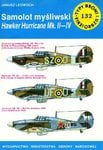Glenn Sprouse
Airman
Hello All:
I have been trying to find details about the Hawker Hurricanes used by Frank Carey while he was flying in Burma. I have found only general information on the Hurricanes being used but nothing specific about his aircraft's markings. I know that the majority of the Hurricanes being used by the British in Burma during early 1942 were Mk.IIb with tropical filters and the Dark Earth-Dark Green-Medium Sea Grey cammo pattern. He started out as Squadron Leader in 135 Squadron but was promoted to Wing Commander of 267 Wing. He achieved kills in 135 Sqn flying Hurricane BE181 and while in 267 wing he used Hurricanes BM914, BM842 and BN468 with the majority of all of these kills in BM194. Outside of this information, I have no further info about how the aircraft are marked.
My question is, would Carey have put his initals on the side of his Hurricane when he was wing commander? I saw a post on another site where someone stated that Carey had a Hurricane IIc with FR*C on the side. Could he have done this with Hurricane IIb BM194? If anyone has any information about this it would be greatly appreciated. Thanks!
I have been trying to find details about the Hawker Hurricanes used by Frank Carey while he was flying in Burma. I have found only general information on the Hurricanes being used but nothing specific about his aircraft's markings. I know that the majority of the Hurricanes being used by the British in Burma during early 1942 were Mk.IIb with tropical filters and the Dark Earth-Dark Green-Medium Sea Grey cammo pattern. He started out as Squadron Leader in 135 Squadron but was promoted to Wing Commander of 267 Wing. He achieved kills in 135 Sqn flying Hurricane BE181 and while in 267 wing he used Hurricanes BM914, BM842 and BN468 with the majority of all of these kills in BM194. Outside of this information, I have no further info about how the aircraft are marked.
My question is, would Carey have put his initals on the side of his Hurricane when he was wing commander? I saw a post on another site where someone stated that Carey had a Hurricane IIc with FR*C on the side. Could he have done this with Hurricane IIb BM194? If anyone has any information about this it would be greatly appreciated. Thanks!



